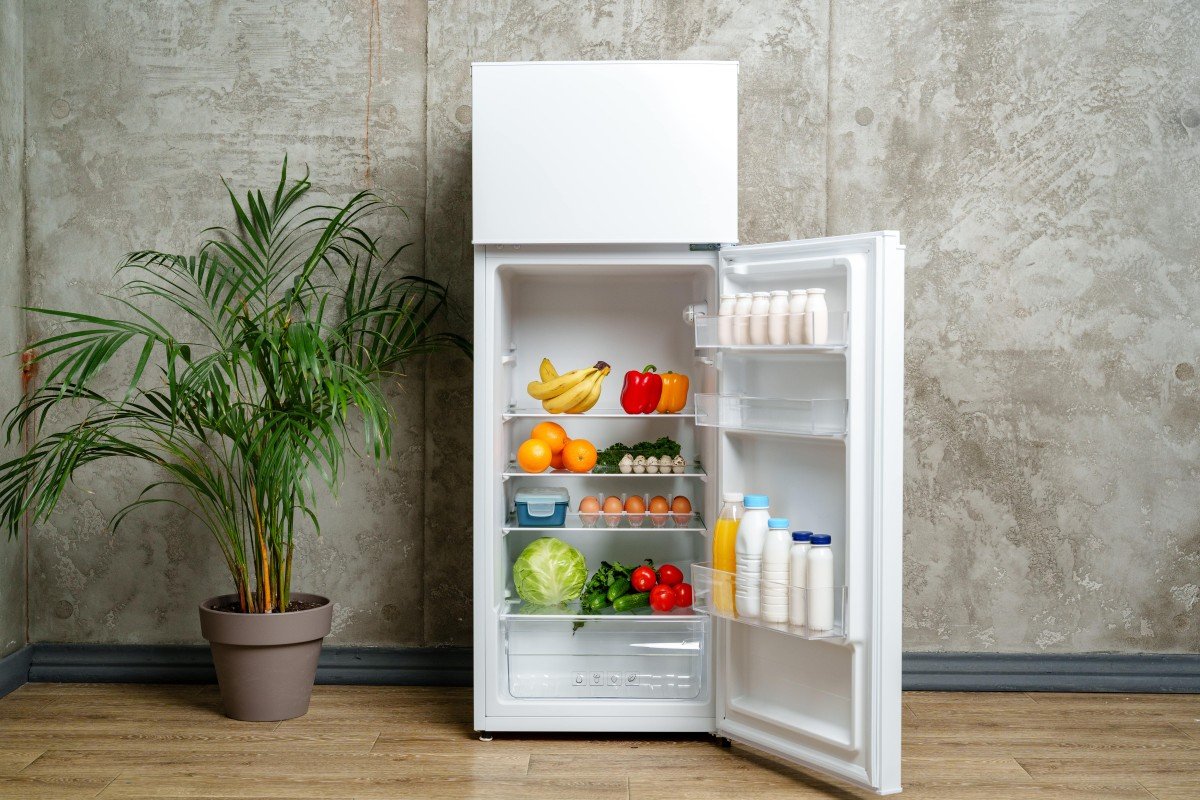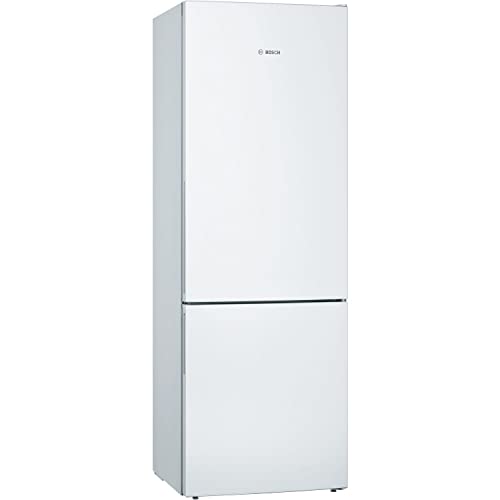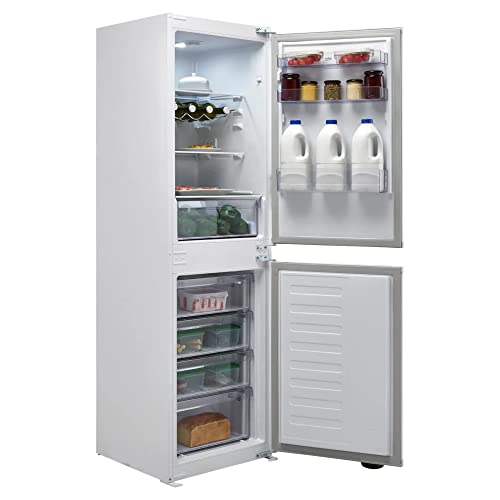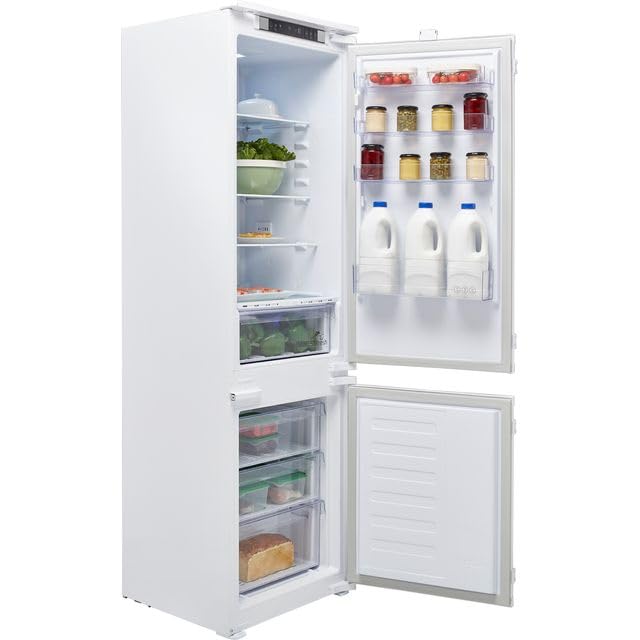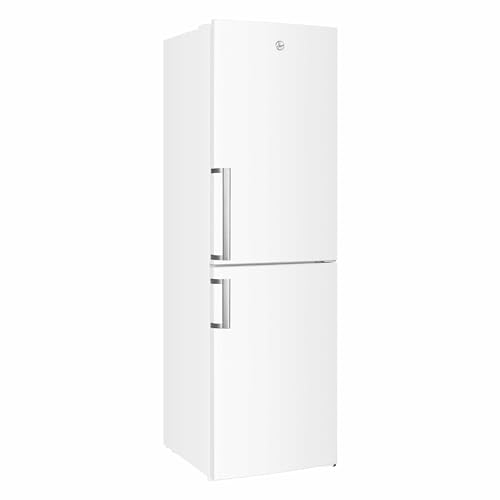Are you considering upgrading your traditional fridge freezer to a frost-free model? If so, this beginner's guide to frost free fridge freezers is here to help you navigate the world of convenient and hassle-free food storage. From understanding what a frost-free fridge freezer is to learning how to set it up and maintain it properly, this comprehensive guide has got you covered.
What is a Frost-Free Fridge Freezer?
A frost-free fridge freezer is a modern appliance that eliminates the need for manual defrosting. Unlike traditional models that require periodic defrosting to remove ice buildup, frost-free fridge freezers have a built-in system that prevents frost from accumulating on the walls and shelves. This is achieved through automated defrost cycles that regulate the temperature and humidity inside the appliance, keeping it free from ice and frost.
Advantages of Frost-Free Fridge Freezers
Frost-free fridge freezers offer several advantages over their traditional counterparts, making them a popular choice among homeowners. Here are some of the key benefits:
No More Defrosting
One of the biggest advantages of a frost-free fridge freezer is that you never have to worry about defrosting it manually. Say goodbye to the tedious task of chipping away at stubborn ice buildup – with a frost-free model, the appliance takes care of defrosting itself, saving you time and effort.
Better Food Preservation
Because frost-free fridge freezers maintain a consistent temperature and humidity level, they provide better food preservation. This helps to keep your fruits, vegetables, meats, and other perishables fresh for longer periods, reducing food waste and saving you money in the long run.
Enhanced Energy Efficiency
Frost-free fridge freezers are designed to operate more efficiently than traditional models, which can lead to lower energy bills over time. The automated defrosting system helps the appliance run smoothly and reduces the workload on the compressor, resulting in energy savings.
Improved Air Circulation
The absence of frost and ice buildup in a frost-free fridge freezer allows for better air circulation inside the appliance. This means that your food is evenly cooled and stored at the optimal temperature, extending its shelf life and maintaining its quality.
Features to Consider When Buying a Frost-Free Fridge Freezer
When shopping for a frost-free fridge freezer, there are several key features to keep in mind to ensure you choose the right appliance for your needs. Here are some important factors to consider:
Capacity
Consider the size of your household and your food storage needs when selecting the capacity of your frost-free fridge freezer. Make sure it has enough space to accommodate your groceries without overcrowding the shelves.
Energy Efficiency
Look for ENERGY STAR certified models that are energy-efficient and environmentally friendly. These appliances consume less electricity, which can lead to savings on your energy bills while reducing your carbon footprint.
Adjustable Shelves and Storage Bins
Opt for a frost-free fridge freezer with adjustable shelves and storage bins to customize the interior layout according to your preferences. This flexibility allows you to organize your food items efficiently and make the most of the available space.
Temperature Controls
Choose a model with precise temperature controls that allow you to adjust the settings to suit different types of food. This feature ensures that your perishables are stored at the ideal temperature for maximum freshness and longevity.
Door Alarm
Consider a frost-free fridge freezer with a door alarm that alerts you if the door is left open or not closed properly. This feature helps prevent temperature fluctuations and food spoilage by ensuring that the appliance remains securely sealed.
Setting Up Your Frost-Free Fridge Freezer
Once you've purchased your new frost-free fridge freezer, it's important to set it up correctly to ensure optimal performance. Follow these steps to get your appliance up and running smoothly:
Location
Place your frost-free fridge freezer in a well-ventilated area away from direct sunlight, heat sources, and moisture. Make sure there is enough clearance around the appliance for proper air circulation and ventilation.
Leveling
Use a level to ensure that your fridge freezer is sitting evenly on the floor. Adjust the leveling legs as needed to stabilize the appliance and prevent any rocking or tilting.
Temperature Settings
Set the temperature controls according to the manufacturer's recommendations to achieve the ideal cooling conditions inside the fridge freezer. Allow the appliance to reach the desired temperature before loading it with food.
Initial Cleaning
Before storing any food items, clean the interior of the fridge freezer with a mild detergent and warm water. Wipe down the shelves, bins, and walls to remove any dust or debris that may have accumulated during shipping.
Organization
Organize your food items strategically inside the fridge freezer, keeping frequently used items within easy reach and grouping similar products together. Use storage bins and containers to maximize space and maintain a tidy interior.
Cleaning and Maintaining Your Frost-Free Fridge Freezer
Proper cleaning and maintenance are essential to keep your frost-free fridge freezer running efficiently and prolong its lifespan. Follow these tips to care for your appliance:
Regular Defrosting
Although frost-free fridge freezers eliminate the need for manual defrosting, it's still important to clean the appliance regularly to remove any food spills or debris. Thawing the freezer compartment and wiping it down with a clean cloth can help prevent odors and maintain cleanliness.
Cleaning the Exterior
Wipe down the exterior of the fridge freezer with a damp cloth and mild detergent to remove fingerprints, smudges, and stains. Pay attention to the door seals and handles, as these areas can accumulate dirt and grime over time.
Air Vents and Coils
Periodically check the air vents and coils at the back of the appliance for dust buildup and debris. Use a vacuum cleaner or a soft brush to remove any obstructions that may hinder the airflow and affect the cooling efficiency.
Door Seals
Inspect the door seals regularly for signs of wear or damage, such as cracks or gaps. Replace any worn seals to ensure a tight seal and prevent cold air from escaping, which can lead to energy loss and temperature fluctuations.
Odor Control
To keep your fridge freezer smelling fresh, place an open box of baking soda or a bowl of activated charcoal inside to absorb odors. You can also wipe down the interior with a mixture of water and baking soda to eliminate any lingering smells.
Troubleshooting Common Issues with Frost-Free Fridge Freezers
Despite their advanced features, frost-free fridge freezers may encounter occasional problems that require troubleshooting. Here are some common issues and solutions:
Excessive Frost Buildup
If you notice an excessive buildup of frost in the freezer compartment, check the door seals for damage or gaps that may be allowing warm air to enter. Ensure that the door is closing properly and that the appliance is level to prevent frost accumulation.
Temperature Fluctuations
Inconsistent temperature levels can be caused by a dirty condenser coil or inadequate ventilation around the appliance. Clean the coil and ensure proper airflow to maintain the desired temperature inside the fridge freezer.
Noisy Operation
Unusual noises coming from the fridge freezer, such as humming, rattling, or buzzing, may indicate a faulty compressor or fan motor. Contact a professional technician to diagnose the issue and repair or replace the defective components.
Ice Maker Malfunction
If your frost-free fridge freezer is equipped with an ice maker that is not producing ice properly, check the water supply line for blockages or leaks. Also, verify that the ice maker is turned on and set to the correct mode.
FAQs
Do frost-free fridge freezers require any manual defrosting?
- No, frost-free fridge freezers are designed to defrost automatically, eliminating the need for manual defrosting.
Are frost-free fridge freezers more energy-efficient than traditional models?
- Yes, frost-free fridge freezers are generally more energy-efficient due to their automated defrosting system.
Can frost-free fridge freezers prevent food spoilage better than traditional models?
- Frost-free fridge freezers offer better food preservation by maintaining a consistent temperature and humidity level.
How often should I clean my frost-free fridge freezer?
- It is recommended to clean your fridge freezer at least once a month to remove any spills or debris.
What should I do if my frost-free fridge freezer is not cooling properly?
- Check the temperature settings, air vents, and door seals for any issues that may be affecting the cooling efficiency.
Do frost-free fridge freezers make more noise than traditional models?
- Frost-free fridge freezers may produce some noise during operation, but excessive or unusual noises should be investigated by a technician.
A frost-free fridge freezer is a convenient and efficient appliance that offers hassle-free food storage and preservation. By understanding the advantages of a frost-free model, considering important features when buying one, setting it up correctly, and cleaning and maintaining it regularly, you can make the most of this modern kitchen essential. With proper care and attention, your frost-free fridge freezer will keep your food fresh and your kitchen organized for years to come.
